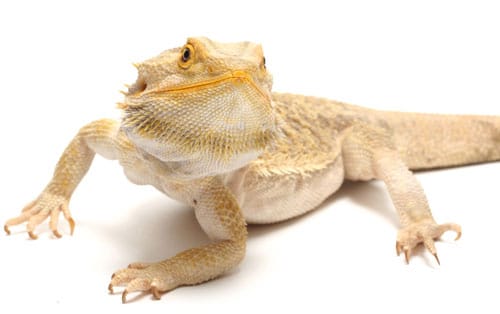What's a good beginner snake, or lizard, for a child?
I attended the Florida International Reptile Expo in Tampa over the weekend with the intent of purchasing my 9-year-old son a pet reptile. However, after speaking with many vendors, I became more and more confused and ended up not getting him anything, as we want to make the correct choice for him. He is mainly interested in snakes and lizards. Can you help us make a good choice of a first pet reptile for him?
I am so glad that you are doing your homework and not making an impulse purchase for your son.
I, too, was at the reptile expo, as I am the herp vet for the show, inspecting every animal offered for sale, ensuring that only healthy animals are offered for sale to both experienced and inexperienced shoppers.
While there is an appeal to the boas and pythons, for a beginner, I would recommend a kingsnake, milk snake or a member of the corn/rat snake group and not a boa or python, which grow much larger. Keep in mind that snakes usually eat live or killed prey, and the family must be OK with providing such prey items regularly for snakes. They should be taught to eat killed prey, and often they learn to accept frozen/defrosted prey items, which is much less unsavory. Some snakes can be trained to consume “snake sausage,” which is a processed food source that is very convenient to feed, but can prove difficult to convert a snake over to.
Corn and rat snakes are available in a wide array of color patterns and are generally very docile, tame creatures that can tolerate a great deal of handling. Of course, with all snakes, the rule is that they should not be handled for a few days after feeding to prevent regurgitation.
For every species of herp, there is a published POTZ (preferred optimum temperature zone). This means that you must be willing to provide a habitat with a temperature gradient, so that the reptile can select the correct temperature. Within the habitat, one must provide an adequate ambient temperature, a localized warmer area for basking and a cooler area. Additionally, most herps are adapted to a drop in the ambient temperature at night. In order to provide the POTZ, one must purchase several thermometers/hygrometers that are very accurate, and these must be placed strategically around the cage to monitor the temperature ranges and humidity. The POTZ for most commonly kept species are readily available in many textbooks, care sheets found online and in REPTILES magazine.
Several lizards can also be a good choice for your son. Bearded dragons are readily available, inexpensive and very hardy. I wouldn’t recommend purchasing a tiny hatchling, but perhaps one that is 6 to 12 months of age. Larger ones are easier to handle and should be well established in good eating habits. Beardies require a focal hot spot for basking that reaches up to 110 degrees Fahrenheit and a warm cage overall. With basking lights, ultraviolet lights that provide UVB light and an appropriate heat source, providing the correct environment should be quite simple. Beardies are omnivores, meaning that they consume both plants (a variety of greens) and animals (usually waxworms, mealworms, crickets, superworms and the occasional pinky mouse). Also, for most lizard species, there are commercially prepared diets that can be used as a portion of the entire menu.
Water dragons are also a fun, good-natured choice of a lizard. Their habitat is a bit more complex, due to the fact that they spend a portion of each day swimming, but a good setup should provide an environment that is conducive to a long, healthy lifespan.
Anoles are another good choice of a lizard. They are easy to house, maintain and feed, and their small size makes them unlikely candidates to inflict a dangerous bite, although if provoked, they can and do bite, as can all pet herps.
I would not recommend a green iguana as a starter pet, nor would I recommend water turtles, such as red-eared sliders. Unfortunately, I saw many small children at the expo carrying hatchling red-eared sliders around. Because of the difficulty involved in properly housing water turtles, this makes them one of the more challenging herps to keep and maintain. They are definitely not for beginners! And green iguanas grow very large, very quickly, and can become dangerous when mature.
I hope this information helps you in making a decision about a new pet for your son. I would expect that you acquired business cards and contact information from some of the local breeders and you should be able to follow up with them, or perhaps you can seek out the appropriate herps from local pet retailers. Enjoy your new family pet, and be sure to find a local vet who can provide a wellness health check and parasite examination so that you get off on the right foot with it.
Need a Herp Vet?
If you are looking for a herp-knowledgeable veterinarian in your area, a good place to start is by checking the list of members on the Association of Reptilian and Amphibian Veterinarian (ARAV) web site at www.arav.com. Look for DVMs who appear to maintain actual veterinary offices that you could contact.


